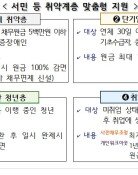[Opinion] Musudan-1
The Norths principal military strategy against the South is implementing decisive force and finishing the war as quickly as possible before the arrival of U.S. reinforcements. Thats the reason why 70 percent of ground forces, 60 percent of its naval assets, and 40 percent of its fighter jets are deployed near the border between Pyongyang and Wonsan. In particular, 170mm-caliber self-propelled howitzers and 240mm multi-barrel rockets are heavily deployed alongside the demilitarized zone within range of Seoul.
However, the more disturbing fact is that the military balance between the two Koreas has been asymmetrical ever since last year due to Pyongyangs possession of nuclear weapons and missiles that can carry them.
North Korea recently pursued both nuclear and missile development without a moment of hesitation. While making no progress in implementing the February 13 agreement reached at the six-party talks, the communist regime has stealthily made considerable progress in missile development. As if boasting of its achievements, a newly developed mid-range missile was showcased on April 25 during a military parade to commemorate the 75th anniversary of the Korean People`s Army, according to a U.S. intelligence official. A large number of missiles appeared in the parade for the first time in 15 years.
The missile, named Musudan-1 by U.S. authorities after Musudan-ri, a remote village in North Hamkyung Province where a missile launch pad is located, has a range of more than 3200 kilometers and has been deployed since 2003. The missile is capable of reaching not only South Korea and Japan, but also Alaska and Guam. The Musudan-1 has a range longer than the Daepodong-1 missile (2,500km) but shorter than that of the Daepodong-2 (6,700km). Considering the fact the Norths test of the Daepodong-2 in July 2006 went awry, Musudan-1 is North Koreas biggest accomplishment since developing its own missiles based on Russian tactical SCUD missiles in the 1970s.
Missiles are not just a symbol of military strength but also a major export item for North Korea. It started deploying Rodong missiles (1,300km) in 1998. The North reportedly earned about $120 million by exporting 40 missiles with an average price tag of $3 million, between 2002 and 2005. Compared to the North, South Korea has much less missile capacity. Even the Souths recently developed 1,000km-range tactical missile is hardly a deterrent to possible North Korean nuclear or missile attacks.
Yook Jung-soo, Editorial Writer, sooya@donga.com






